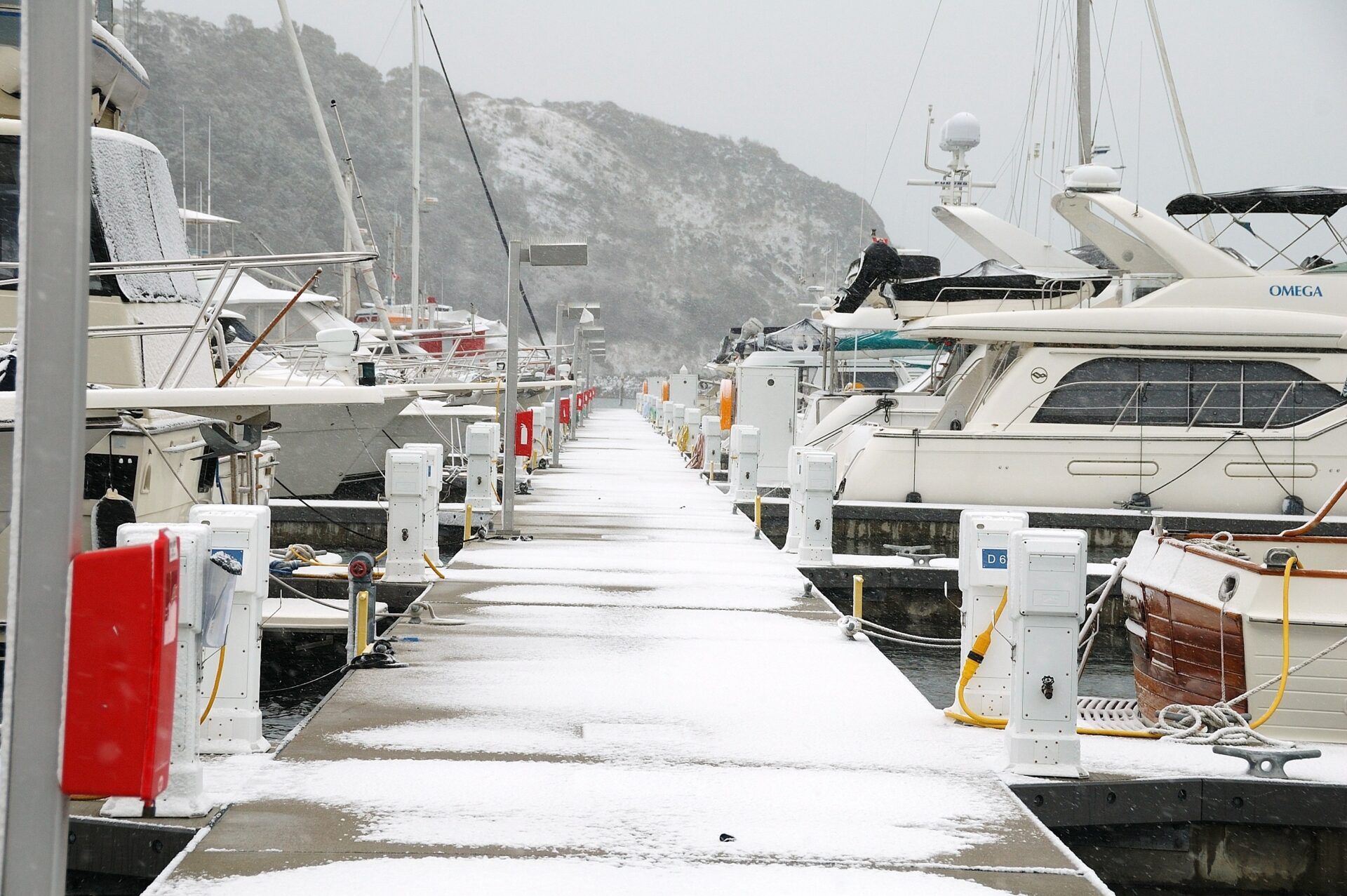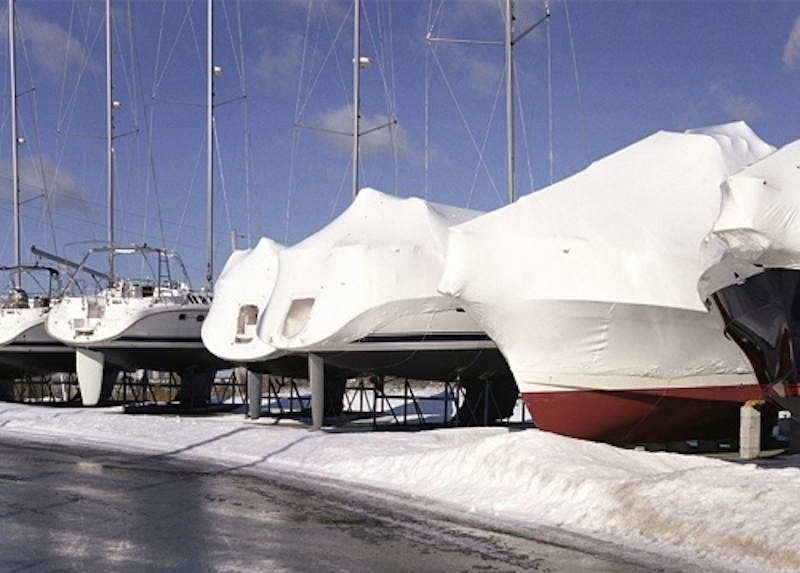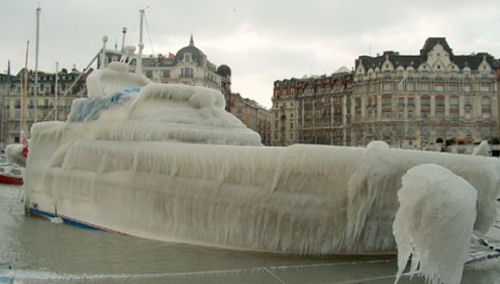How to Do a Mid-Winter Checkup on Your Boat

Boating boomed in 2020, with scads of first-time boat buyers chasing respite from the pandemic. Now many of these new boat owners are learning how to maintain and store their vessels for the first time. A midwinter visit to check on the boat − no matter if stored ashore in a backyard, a yacht club or a marina parking lot − is a wise thing to do.
BoatUS, the US boat owners’ association, has four tips to ensure there are no surprises at spring launch.
1. Water is bad.
The number-one concern for any boat in long-term winter storage is water. It can’t be allowed in, but if it does, the water needs a way out. Check your boat’s winter cover to ensure it still allows rain and heavy snow loads to easily shed away from the boat. Small boats should have the drain plug removed.

A tight-fitting winter cover will also help keep out the critters, including raccoons, feral cats and muskrats, whose damage boat insurance policies generally do not cover.
2. Take it home.
If you forgot to bring home life jackets when you put the boat away in the fall, it’s best to do it now. That includes cushions and throwable devices you keep near the helm. They will last longer and stay cleaner. Store in a dry location at home. Signal flares can be kept aboard if they are in location not affected by moisture.
Some handheld air horns can leave a not-easy-to-remove rust ring when stored in their upright position. Both signal devices can be put into zipper-lock freezer bags. Other common items boaters mistakenly leave on their boat during winter storage are liquid cleaners that can burst open during the freeze/thaw cycle and food, which draws vermin.
3. Air it out.
Try to ventilate the boat, which will help keep mold and mildew at bay. If the boat is closed tightly and doesn’t have ventilation, use desiccants – often sold in bucket-type containers – in cabins or living space below. Follow the manufacturer's instructions and you should be able to keep a fairly dry boat over the long winter storage period making spring cleanup easier and preserving your boat’s value.
4. Be safe.

There will likely be ice and snow this time of year. If you need to use a ladder, ensure it’s firmly planted, always tie it off at the top, and have a friend hold it while you’re ascending/descending. Never move or adjust a jack stand – call the yard for assistance. Tying off a winter cover to jack stands is also a very bad idea as the stands could be yanked out from under the boat during high winds.